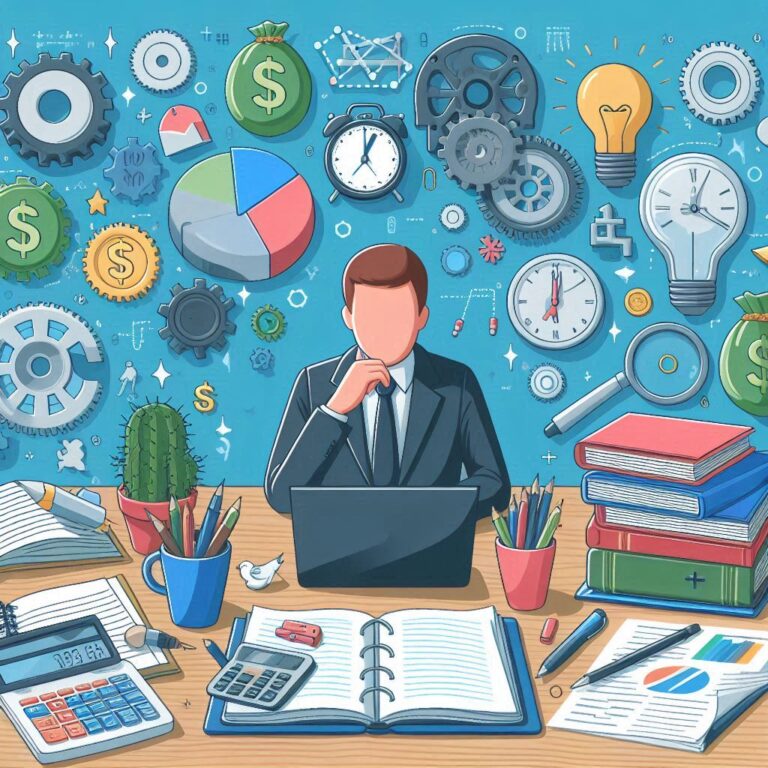Unit 4 Last Minute Notes(Economics)
Get your hands on the Quick Revision Notes for Economics for free at Revisiontown. Rely on these study resources to gain detailed insights into all the chapters. With these revision notes to guide you, there is no doubt that you will be able to complete the syllabus....
ROLE OF THE GOVERNMENT AS;
| A PRODUCER | AN EMPLOYER |
- Key industries
- Natural monopolies
- Provide essential goods
- Provide public goods
- Provide merit goods
| - Employ workers and managers to operate its state owned enterprises
- This helps government to achieve their aims
- To reduce unemployment
- To reduce inflation
|
AIMS OF GOVERNMENT POLICIES
| FULL EMPLOYMENT | A situation where people actively seeking for work remains employed |
| PRICE STABILITY | A situation where inflation is kept under control |
| ECONOMIC GROWTH | An increase in the real output of goods and services overtime |
| REDISTRIBUTION OF INCOME | Reducing the gap between rich and poor |
| BALANCE OF PAYMENT STABILITY | Balancing between imports and exports |
POLICIES OF THE GOVERNMENT
| FISCAL POLICY | - Regulation of taxation and government spending to influence an economic activity.
- Expansionary fiscal policy is ↑ government expenditure ↓ tax
- Contractionary fiscal policy ↑ tax ↓ government expenditure
- This is a policy of the government
|
| MONETARY POLICY | - Regulation of interest rate and money supply to influence an economic activity.
- Expansionary monetary policy is ↑ money supply ↓ interest rate
- Contractionary monetary policy ↑ interest rate ↓ money supply
- This is a policy of the central bank
|
| SUPPLYSIDE POLICY | - Policies used to increase the national output. For examples
- Privatization
- Improving education and training
- Reduce power of trade union
- Selective subsidies
- Tax incentives
- Polices to reduce anti-competitive behaviour
|
CONFLICTS OF AIMS
- Price stability and full employment
- Economic growth and price stability
- Economic growth/full employment and balance of payment stability
- Redistribution of income and economic growth
TAXATION
A compulsory payment imposed by the government from people and businesses
REASONS FOR TAX
- Revenue
- Reduce inflation
- To reduce inequality
- To reduce harmful goods
- To achieve BOP surplus
- To control monopoly
- To reduce external cost
TYPES OF TAX
| DIRECT TAX | - Tax on income and wealth of the people and profits of business
- Are progressive
- Burden cannot be transferred to another person
- Paid directly to the revenue department
- Income tax, wealth tax, corporation tax
|
| INDIRECT TAX | - Tax on spending goods and services
- Are regressive
- Burden can be transferred to another person
- Paid indirectly, first paid to seller and they pay to government
- GST, VAT, Import duty
|
| PROGRESSIVE TAX | - Are usually direct tax
- The % of tax increases with increasing income
- Most fair
|
| REGRESSIVE TAX | - Are usually indirect tax
- The % of tax decreases with increasing income
- Unfair
|
| PROPORTIONALTE TAX | - The % of tax are same for all income earners
|
BUDGET
Financial statement which shows estimated revenues and expenditures of the government for the coming year in a given period of time
TYPES OF BUdGET
- SURPLUS BUDGET:- estimated revenue greater than expenditure
- DEFICIT BUDGET:- estimated expenditure greater than revenue
- BALANCED BUDGET: – estimated revenue and expenditures equal.
GOVERNMENT INFLUENCE ON PRIVATE PRODUCERS
RETAIL PRICE INDEX (RPI) / CONSUMER PRICE INDEX (CPI)
Instruments used to measure the rate of inflation
HOW CPI IS CALCULATED?
BASE YEAR
PROCESS OF INFLATION CALCULATION
- Survey
- Base year (100)
- Basket of goods
- Weights
- Weighted average price
- Comparison
INFLATION
| MEANING | A persistent rise in the general price level of goods and services overtime |
| TYPES | - Creeping :- low rate of inflation
- Suppressed :- when AD > AS
- Hyper :- an uncontrolled high rate
|
| CAUSES | - Demand pull:- caused due to increase in aggregate demand
- Cost push:- caused due to increase in costs of production
- Monetary :- caused due to increase in money supply
- Imported:- caused due to increase in the price of imports
|
| EFFECTS | - Purchasing power falls
- Money value falls
- BOP deficit
- Fall in real value of saving , loans and investment
- Fixed income negatively effected
- Lenders lose borrowers gain
- Varied income group gains
- Businesses gain
|
| POLICIES TO REDUCE | - Fiscal policy
- Increase direct tax
- Decrease indirect tax
- Decrease government expenditure
- Monetary policy
- Increase interest rates
- Decrease money supply
- Supply side policy
- Give subsides to reduce cost
- Tax incentives to reduce cost
- Improve education to improve productivity
|
DEFLATION
| MEANING | A persistent fall in the general price level of goods and services over time |
| CAUSES | - Their market supply has increased relative to demand.
- Competition between firms to supply them has increased.
- Labour productivity rises, increasing output and reducing average costs.
- Technological advance has reduced their cost of production.
- Market demand for them has fallen.
|
| CONSEQUENCES | - Consumer will delay many spending decisions as they wait for prices to fall further.
- Stock of unsold goods accumulates so firms cut their prices and this reduces their profits and incentive to invest.
- Firms cut their production and reduce the size of their workers.
- Household incomes fall as unemployment rises, further reducing demand for goods and services.
- The value of debt held by people and firms rise in real terms as prices fall and this increases the burden of making loan repayments.
- Firms stop investing in new plant and machinery as demand falls and the cost of borrowing rises. This will reduce future growth in the economy.
- The real cost of public spending rises but tax revenues fall as economic activity slumps. This means the government must borrow more money despite the rising the real cost of doing so.
- Eventually the economy goes into a deep recession.
|
| POLICIES TO REDUCE | - It is therefore hard to break out of the downward spiral that can occur in a deflation and it will require a major boost to consumer demand and confidence if it is to be achieved.
- The first line of defense used by a government is usually to cut interest rates to a low level. However, if prices are falling this means real interest rates will be rising, even if the nominal rate is zero.
- A government may also print more money to pump more currency into the economy during deflation but people and firms may not increase their own spending as a result if they expect most prices to continue to falling.
- The additional money supply however be used by the government to fund projects that will draw more people back to employment.
- Expansionary fiscal policy may also involve tax cuts on incomes and profits to boost demand.
|
UNEMPLOYMENT
A situation where people actively seeking work remain jobless
| MEANING | A persistent fall in the general price level of goods and services over time |
| TYPES/CAUSES | - Frictional/search:- short term unemployment caused when people search for a new job
- Seasonal:- unemployment caused due to changes in the season
- Structural/regional/technological:- unemployment caused due to permanent decline in the demand for a good in a particular industry
- Cyclical/general/demand deficient: – due to decline in total demand in a country. Also job losses due to recession
|
| EFFECTS | - Loss of skills
- Loss of output
- Loss of tax revenue
- Social problems
- Poverty increase
- Fall in standard of living
|
| POLICIES TO REDUCE | - Job centers and job information
- Government assistance
- Reduce direct tax
- Lower interest rates
- Education and training
- Privatization
|
RATE OF UNEMPLOYMENT= no. of unemployed/labour force x 100
PATTERN OF EMPLOYMENT
The pattern of employment of a country may change due to;
- Development
- Government policy
- Changes in population structure
- Globalization








